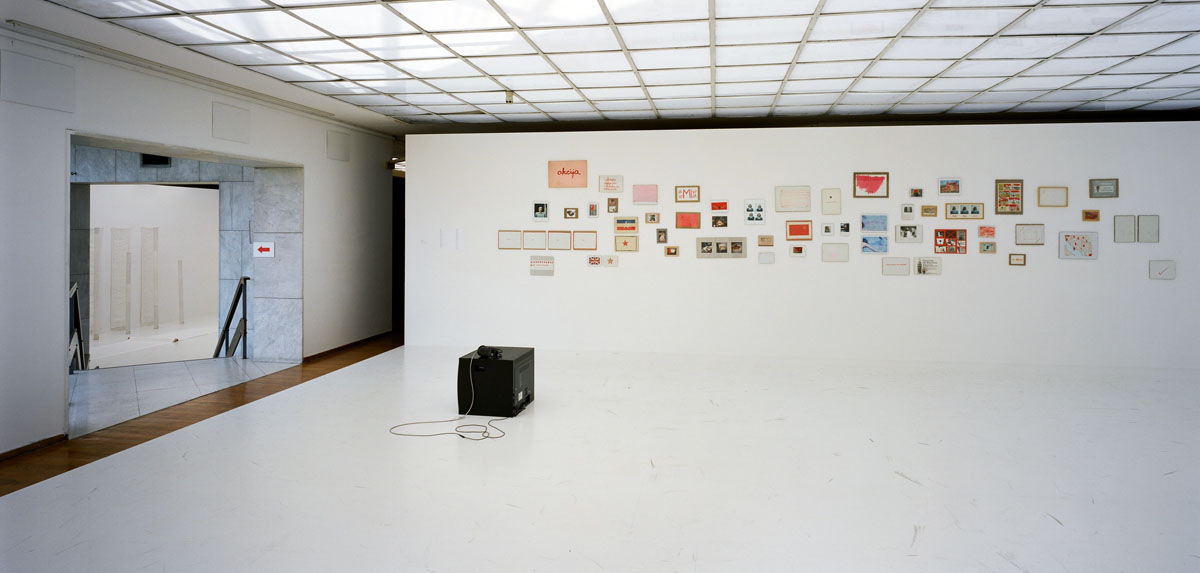Kontakt Belgrade
Jan. 20 — Mar. 1, 2007
Museum of Contemporary Art, Belgrade
Artists:
Paweł Althamer, Heimrad Bäcker, Walter Benjamin/New
York, Cezary Bodzianowski, Josef Dabernig, Carola
Dertnig, VALIE EXPORT, Stano Filko, Heinz Gappmayr,
Gorgona, Tomislav Gotovac, Ion Grigorescu, Tibor Hajas,
IRWIN, Sanja Iveković, Šejla Kamerić, Julije Knifer,
Július Koller, Jiří Kovanda, Edward Krasiński, Katalin
Ladik, Karel Malich, Vlado Martek, Dalibor Martinis,
Natalia LL, OHO, Roman Ondák, Tanja Ostojić, Mladen
Stilinović, Raša Todosijević, Milica Tomić, Peter Weibel,
Heimo Zobernig
With the presentation of a special selection from the Kontakt Art Collection and its focus on Central, South and Southeastern Europe, the artworks included in this exhibition were given a re-appraisal and a referential framing in one of the contexts within which they had been made. It was a special opportunity to present the collection in one of the only museums of contemporary art to have been built in Eastern Europe during the 1960s in the modernist tradition prevailing at that time. The collection’s relationship with the local context was visible in a great number of artworks, many of which had been produced in the former Yugoslavia. Hence, the exhibition gave rise to a unique relationship between the artworks and the architecture of the building by Ivan Antić and Ivanka Raspopović. The exhibition demonstrated the significance of both the local infrastructure and its cultural
heritage, which was linked to artistic masterpieces of the region and to social transformations over a period of more than 50 years. Paraphrasing the western model of the white cube, the exhibition display by Nicole Six and Paul Petritsch intervened with an architectonic setup within the grid structure of a high-modernist building. The corridors between the substance of the old building and the intervention of white stages for displaying art almost became a symbol of cultural difference, translating the perception of the artworks into architectonic abstraction. Setting up four identical rooms with a white floor and white walls linked the exhibition to four relevant themes: the reflection on spatial issues, themes of abstraction, and both political and gender-related topics in public space.





1 Stano Filko, Mladen Stilinović
2 Jiří Kovanda, Heimo Zobernig
3 Stano Filko
4 Heimo Zobenig, Ion Grigoriescu
5 Edward Krasiński